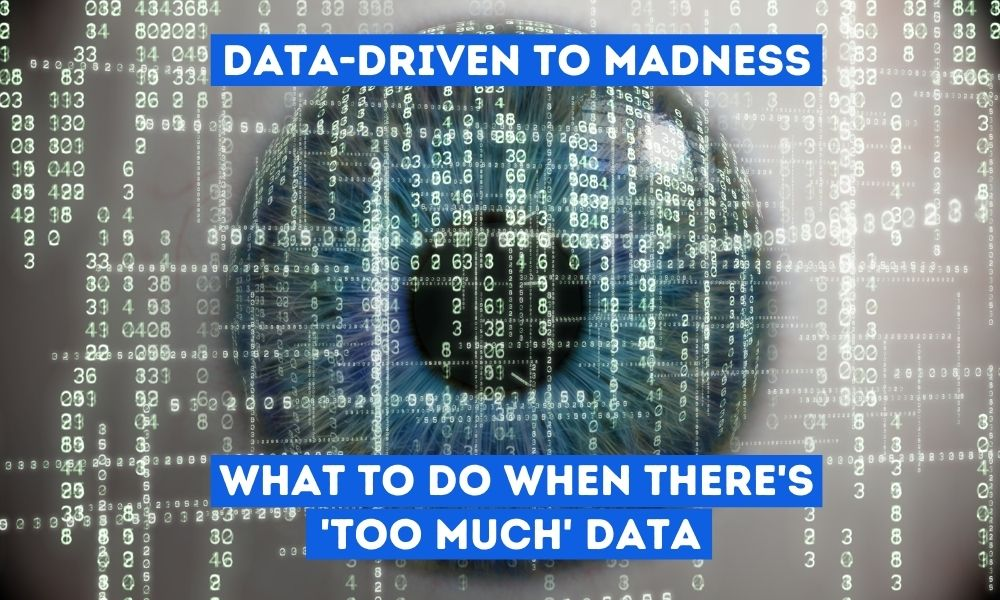
Data-driven decision making is critical, but 65% of organisations report having too much data to analyse. Here’s how automation will solve this decade’s biggest business challenge.
Share This Post
Share on facebookShare on linkedinShare on twitterShare on email
Subscribe To Weekly Millimetric Newsletter
‘Data is King’
‘Data is the fuel of industry 2.0’
‘Listen to the data’
‘You must make data-driven decisions to survive in business today’
Unless you’ve been living under a rock for the last decade, you’ve probably heard some version of these statements – many times.
With the mass digitisation of businesses over the last 20 years, data has become an industry obsession. We use data to understand our customers better, understand our businesses better, understand ourselves better. And today, a whopping 90% of enterprise analytics and business professionals say that data-driven decision making is absolutely key to their digital transformation initiatives.
In order to make these initiatives successful, we’ve been collecting data in its droves – and, fortunately for us, it’s being created at a faster and faster pace. Today, humankind will generate about 2.5 quintillion bytes of data. By 2025, it’s expected that the figure will reach 463 exabytes(a number we can’t fathom either, but if it helps, that’s the equivalent of 212,765,957 DVDs).
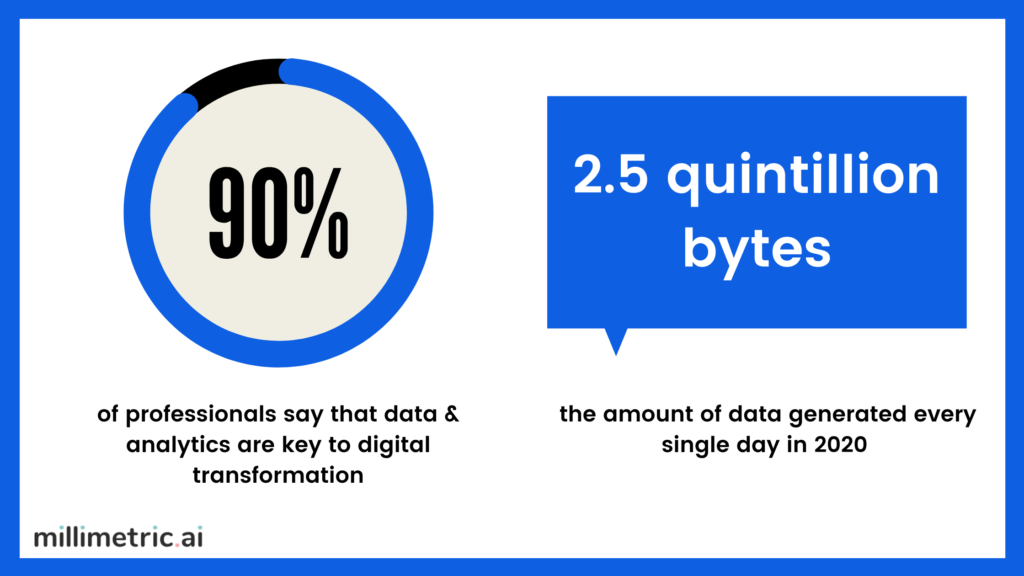
But, for all we worship at the altar of data, can too much of it be a bad thing? And what do you do when you have ‘too much data’ to analyse, and – instead of finding yourself making better, data-driven decisions – you’re just overwhelmed?
READ MORE: Why AI anomaly detection is business critical
How are we using data today?
Generally speaking, data is used to inform strategic and operational decisions across all aspects of business. Data-driven decision making means objectively identifying what’s working and what isn’t in an organisation, using the KPIs available to you.
Let’s look at the example of digital marketing. Data-driven marketing is the standard today, and it’s an approach that relies on data for decision making in order to provide better, more engaging customer experiences. To make those decisions, marketers must track and analyse a lot of data, which will likely mean searching through multiple dashboards and datasets to unearth and understand their KPIs. Just some of the KPIs they might track are:
- Engagement with marketing campaigns
- Conversions and sales
- Revenue and average order value
- Customer satisfaction
- Location of users
Used correctly, analysing data like this drives more intelligent campaigns and better decisions across the department. So, when it comes to attracting customer’s attention, data-driven organisations are a remarkable 23 times more likely to acquire customers, six times as likely to retain customers, and 19 times as likely to be profitable as a result.
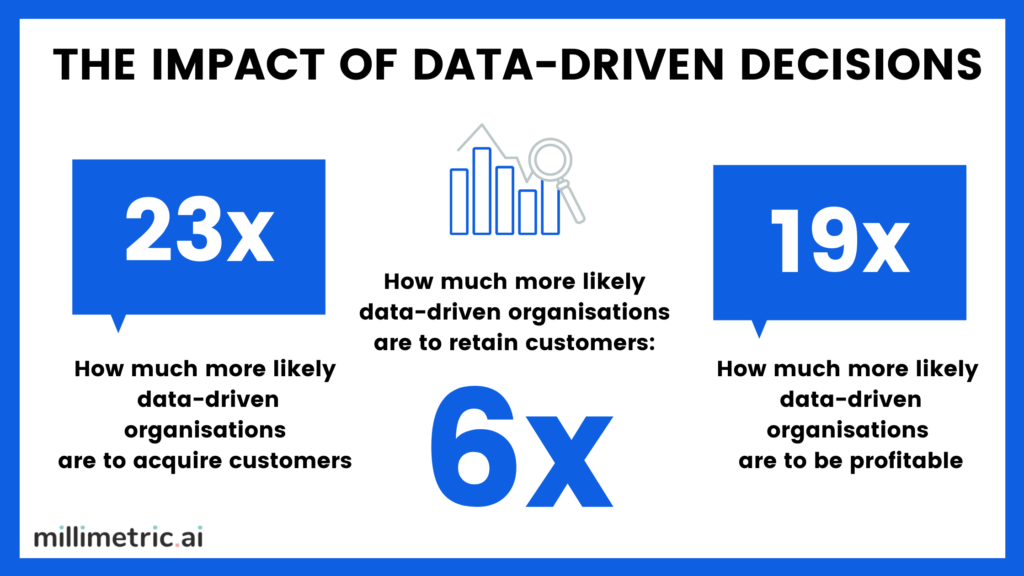
But data-driven practices are a double edged sword. On one side, a sizeable amount of data can help you make better, faster decisions. On the other, data is only valuable to you if you are able to properly analyse it and draw actionable insights. And the more data you have, the harder that process will be.
Is it possible to have ‘too much’ data?
Yes and no.
In general, the more data you have, the better data-driven decisions you can make since you’re drawing from a larger set of information. But there’s so much data being created today that it’s getting harder and harder for many organisations to stay on top of it and actually generate effective data-driven decisions. Most significantly, analysing, reporting on and creating actionable insights from data can be incredibly difficult. With the amount of data set to skyrocket over the coming years, this will only become harder.
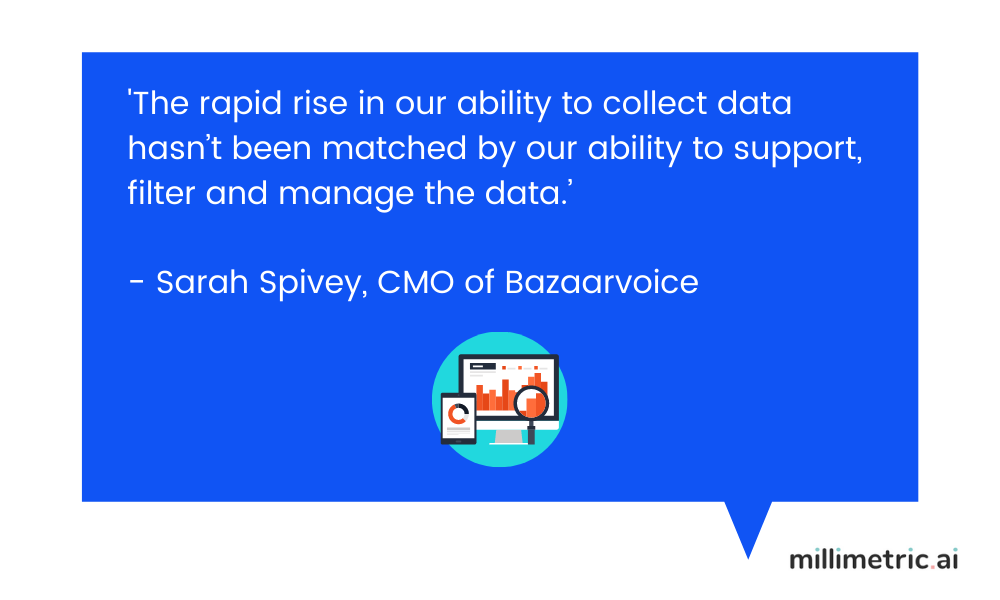
As Sarah Spivey, CMO of Bazaarvoice, said of in a Forbes interview: ‘Data saturation is everywhere. We’ve often had the belief that more is better; however, that actually isn’t true in the case of data. The rapid rise in our ability to collect data hasn’t been matched by our ability to support, filter and manage the data.’
This is clear when we consider the fact that 65% of companies report having too much data to analyse and a whopping 60-73% of data goes unused in analytics.
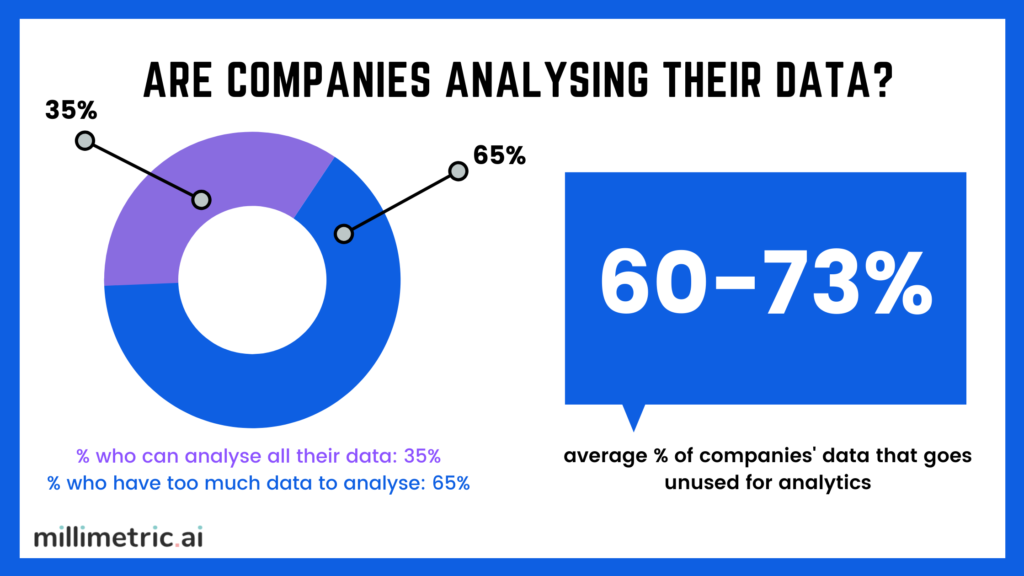
With so much valuable data slipping through the cracks, we’re missing out on opportunities to make data-driven decisions that drive better customer experiences and spearhead vital innovation. So, how can organisations stay on top of their data and ensure they are implementing better data-driven decision making?
Data-driven decision making: The requirements
To make sure you are consistently analysing data and generating actionable insights and data-driven decisions from it, there are three crucial requirements:
- Time: To see true results from your data, significant time needs to be put in, week in week out, to comb through dashboards and datasets to produce reports and actionable insights. This time is likely to increase the bigger the company, the more customers and the more data you are attempting to track.
- Resources: Significant resources need to be put towards acquiring and cleaning data, budgeting for the tools used to understand it and on salaries for those crunching the data.
- Talent: Hiring talent with the right training for data and analytics projects is critical to understanding behaviours and trends, and expanding data literacy across organisations.

Priority access to these three requirements is why companies like Amazon and Netflix are so successful. They understand their customers perfectly because they have the time, resources and talent to sort through and analyse data, dashboards and KPIs. With large teams of data scientists, they can create customised solutions and tools, keep innovating and drive the digital performance that allows them to succeed.
But most businesses don’t have that kind of access. Time, resources and particularly data and analytics talent are in short supply for many organisations. So how can they make effective data-driven decisions? How can they solve the problem of having too much data to analyse? And, even if they’re managing now, what about in just a few years time when they’re drowning in yet more data?
Luckily, data also has the answer: AI and automation.
AI and automated data analysis
The huge influx of data that has overwhelmed us over the past few years has also allowed us to build AI and machine learning systems that help drive data-driven decisions. AI is particularly brilliant at constant number crunching and analysing large sets of data, over and over again – exactly what us humans struggle to do. This means that it’s perfectly placed to take over the analysis of data that the majority of companies expect their employees to be doing.
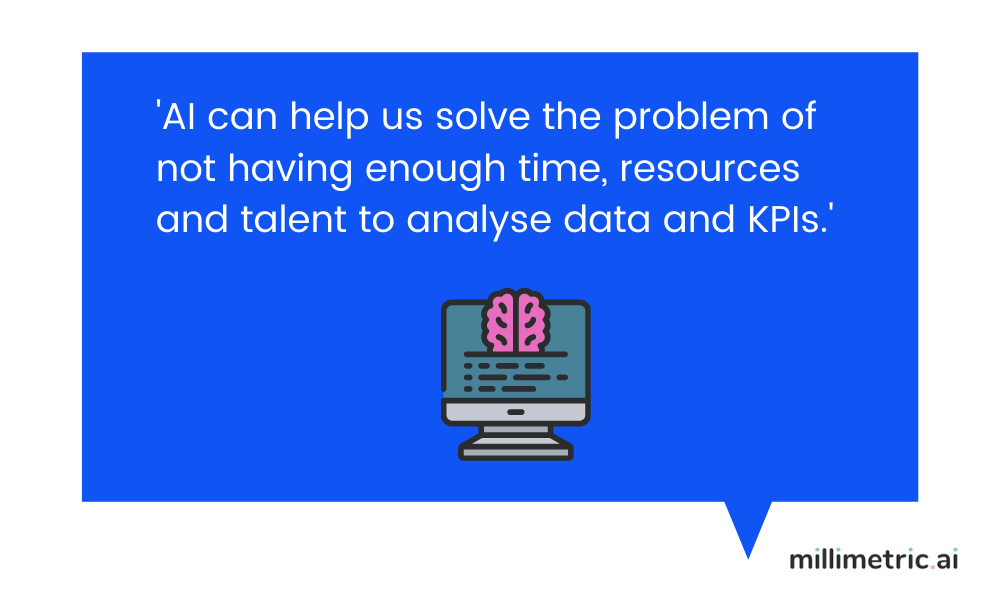
With AI automating the process of data analysis, businesses across the board will reap the rewards. Enjoying:
- 24/7 analysis revealing any anomalies, trends and digital performance opportunities as they arise
- Increased efficiency of data analysis
- Employees having more free time so they can focus on driving performance and the creative endeavours humans excel at
- More reliable results and data-driven decisions. Humans make mistakes – AI doesn’t
- ‘Analytics-on-demand’. Rather than employees trying to find relevant information by scanning through dashboards and datasets constantly, AI will be able to deliver the insights that are most important immediately
The result will be the democratisation of access to data-driven decision making, bringing with it innovation and digital performance gains from even the smaller industry players.

Final thoughts
Being overwhelmed by the amount of data there is to analyse and use for data-driven decision making completely understandable – in fact, most businesses are in the same boat. But, fortunately, AI is going to change the game entirely in the next few years.
Over the coming decade, we’ll see a significant increase in the number of forward-thinking businesses using AI and machine learning tools like our KPI analysis platform to streamline data-driven decisions. Using tools like ours, organisations don’t need unlimited access to time, resources and talent. Instead they will be able to tap into ‘analytics-on-demand’ 24/7, with machine learning constantly monitoring their datasets and alerting them to the important issues and opportunities to improve digital performance.
If you’re looking to move to an ‘analytics-on-demand’ model for your KPIs, why not get ahead of the curve and try out our automated anomaly detection and KPI analysis platform, Millimetric, for free today?
Subscribe to receive our latest blogs
.png)
